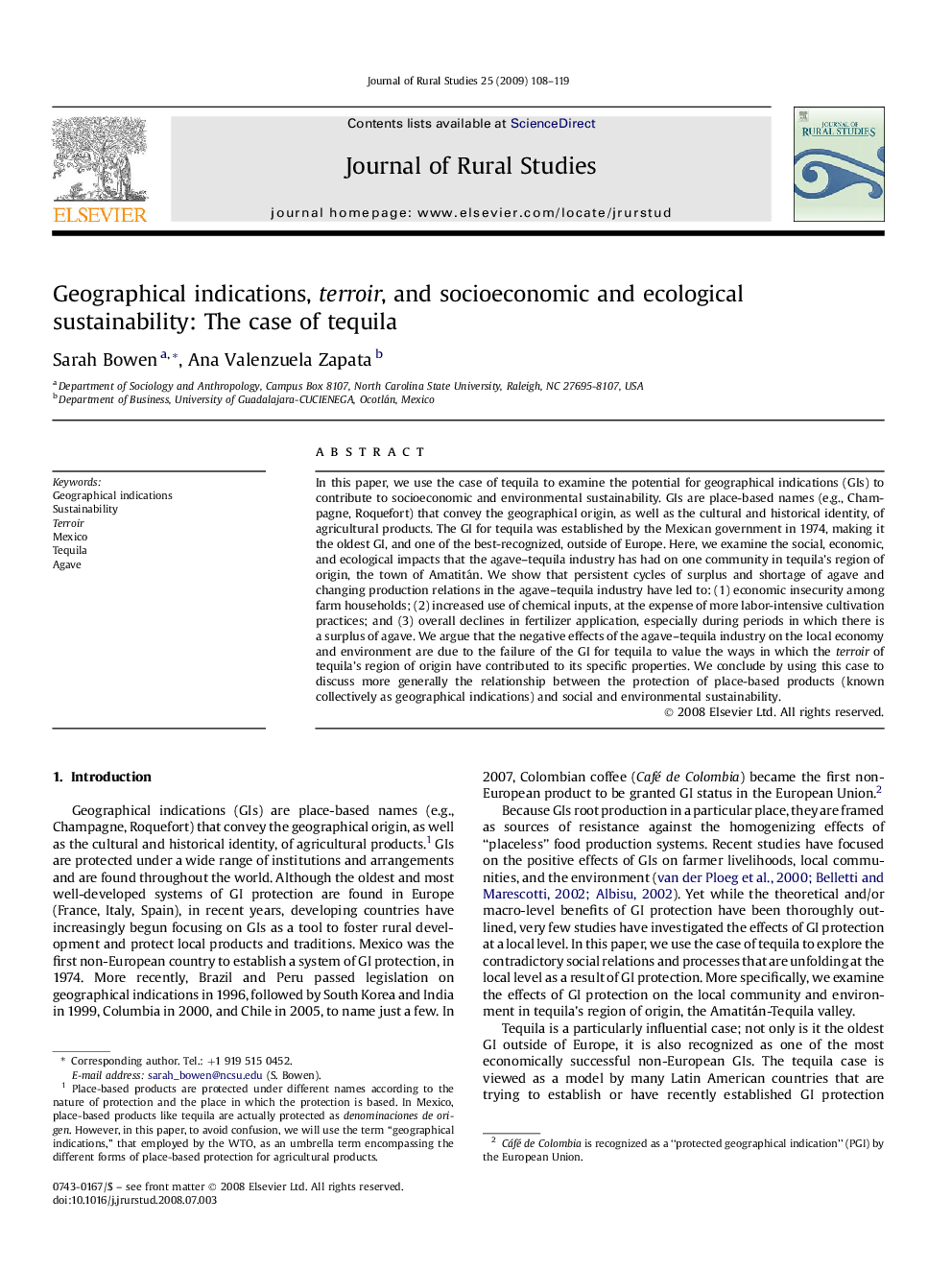| کد مقاله | کد نشریه | سال انتشار | مقاله انگلیسی | نسخه تمام متن |
|---|---|---|---|---|
| 92744 | 160004 | 2009 | 12 صفحه PDF | دانلود رایگان |

In this paper, we use the case of tequila to examine the potential for geographical indications (GIs) to contribute to socioeconomic and environmental sustainability. GIs are place-based names (e.g., Champagne, Roquefort) that convey the geographical origin, as well as the cultural and historical identity, of agricultural products. The GI for tequila was established by the Mexican government in 1974, making it the oldest GI, and one of the best-recognized, outside of Europe. Here, we examine the social, economic, and ecological impacts that the agave–tequila industry has had on one community in tequila's region of origin, the town of Amatitán. We show that persistent cycles of surplus and shortage of agave and changing production relations in the agave–tequila industry have led to: (1) economic insecurity among farm households; (2) increased use of chemical inputs, at the expense of more labor-intensive cultivation practices; and (3) overall declines in fertilizer application, especially during periods in which there is a surplus of agave. We argue that the negative effects of the agave–tequila industry on the local economy and environment are due to the failure of the GI for tequila to value the ways in which the terroir of tequila's region of origin have contributed to its specific properties. We conclude by using this case to discuss more generally the relationship between the protection of place-based products (known collectively as geographical indications) and social and environmental sustainability.
Journal: Journal of Rural Studies - Volume 25, Issue 1, January 2009, Pages 108–119